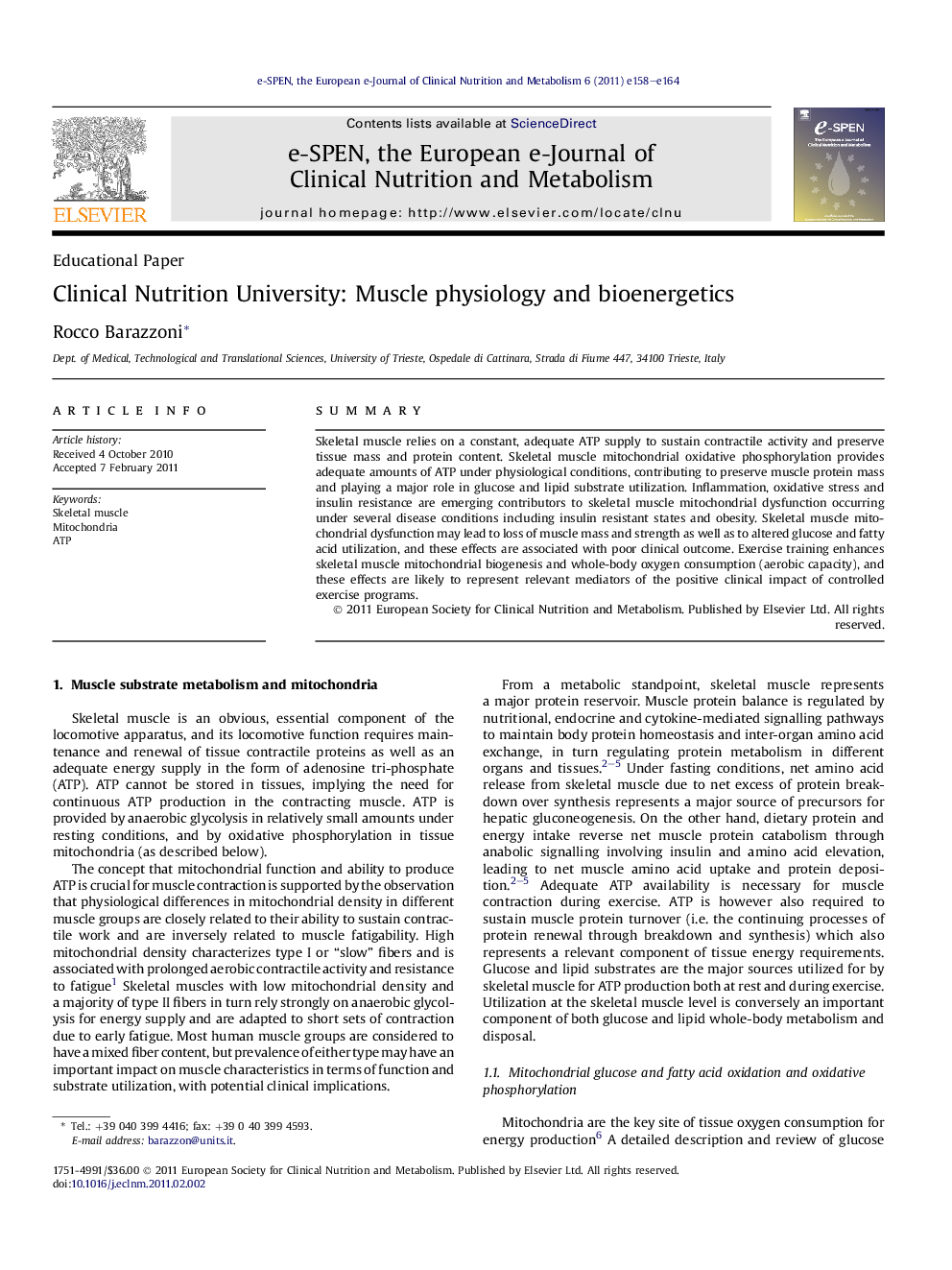| Article ID | Journal | Published Year | Pages | File Type |
|---|---|---|---|---|
| 2691094 | e-SPEN, the European e-Journal of Clinical Nutrition and Metabolism | 2011 | 7 Pages |
SummarySkeletal muscle relies on a constant, adequate ATP supply to sustain contractile activity and preserve tissue mass and protein content. Skeletal muscle mitochondrial oxidative phosphorylation provides adequate amounts of ATP under physiological conditions, contributing to preserve muscle protein mass and playing a major role in glucose and lipid substrate utilization. Inflammation, oxidative stress and insulin resistance are emerging contributors to skeletal muscle mitochondrial dysfunction occurring under several disease conditions including insulin resistant states and obesity. Skeletal muscle mitochondrial dysfunction may lead to loss of muscle mass and strength as well as to altered glucose and fatty acid utilization, and these effects are associated with poor clinical outcome. Exercise training enhances skeletal muscle mitochondrial biogenesis and whole-body oxygen consumption (aerobic capacity), and these effects are likely to represent relevant mediators of the positive clinical impact of controlled exercise programs.
